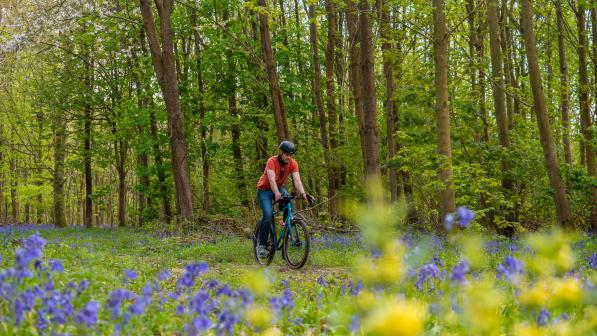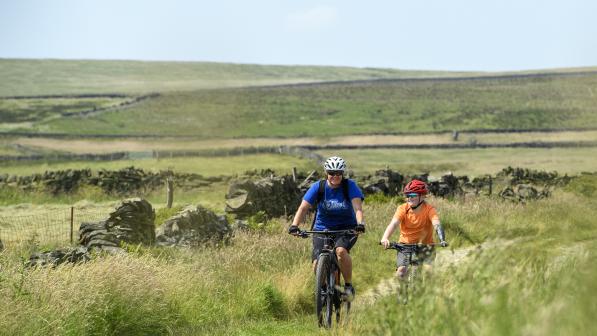What should a right to roam mean?

Twenty years ago, something remarkable happened in Scotland.
On 25 February 2003, Scotland’s Land Reform Act came into force, introducing the most progressive arrangements for public access to land anywhere in the UK.
Right of responsible access in Scotland
This didn’t create a legal right to roam, despite what some people say. Rather, it established a right to access and cross land for recreational, educational and certain other purposes, subject to a crucial caveat: the rights only apply if exercised responsibly, as specified in the Scottish Outdoor Access Code.
There are also common-sense exceptions including houses and gardens, and other buildings and their yards or compounds, so it doesn’t give people the right to walk through your back garden!
What do we mean by ‘roam’?
The word roam also implies that people are on foot, whereas the access rights created in Scotland also apply to any non-motorised activities, including cycling, horse riding and wild camping.
Unfortunately, up to now there’s been little sign of political enthusiasm to seriously look at access rights, laws, or how more of the countryside in England could be opened up for responsible access.
This is despite years of campaigning and lobbying by organisations including Cycling UK, pressing for a more enlightened approach towards public access to land in England and increased access for non-motorised users, though not necessarily following exactly the same model adopted in Scotland.
But suddenly, people and politicians are talking about a right to roam and public access to the countryside, thanks to a decision on wild camping taken by landowners Alexandra and Diana Darwall in Dartmoor.
Wild camping and the Darwalls
Wild camping is simply camping outside designated campsites. It’s not illegal in England and Wales, but it can constitute a trespass. However, it had long been thought that wild camping in Dartmoor National Park was a public right under the 1985 Dartmoor Commons Act.
The Darwalls own land in the park including Stall Moor, an extensive area of unenclosed moorland. They went to court last year claiming there was no right under the Act to wild camp on the moor without their permission, and last month the High Court decided they were right.
Ironically, the Darwall’s desire to restrict access to the moor and a court decision upholding their right to do so has galvanised the Right to Roam campaign and others seeking access reform. Dartmoor National Park is asking the Court of Appeal to reconsider the decision, and politicians are taking notice.
Promises of a new right to roam
On Twitter, Labour’s shadow minister for environment Alex Sobel MP was soon calling for National Parks to be more accessible not less, saying: “Our National Parks should be open to all and access to Dartmoor is integral to that. Labour will expand the right to roam as part of our programme for Government. Our natural spaces are here for us all to share for biodiversity, wellbeing and equity.”
Labour’s shadow environment secretary went further, stating that Labour would pass a Right to Roam Act, so presumably we’re delighted?
Cycling UK wants to see increased access to the countryside for people cycling, so we believe it’s really helpful that a conversation about a ‘right to roam’ has started. It’s a moment we need to capture, particularly as politicians are talking about changing the laws which govern people’s access to large areas of our countryside.
But this can’t just be a conversation about roaming on foot, and the big question is: what do people mean when they talk about a ‘right to roam’?
Open access land
It’s sometimes said that the Countryside and Rights of Way Act 2000 (CRoW), which came into force 20 years ago today, the day before Scotland’s Land Reform Act, introduced a partial right to roam in England and Wales.
CRoW gave people legal access to walk over certain areas of land defined and recorded as areas of mountain, moor, commons, and some downland, heath and coastlines. That land is usually referred to as open access land, and covers around 8% of the land in England, typically in the more remote areas as shown on Natural England’s helpful green infrastructure map.
However, there are restrictions in schedule 2 of CRoW which mean open access land isn’t available to people cycling, horse riding, camping or indeed for water sports.
Also, organisations including Ramblers have long campaigned for the partial right to roam to be extended to other landscapes such as woodland, river and lakeside, and a wider definition of downland to include more areas of grassland.
That would increase the total area of land people have legal access to or a right to roam over, on foot, and probably make that freedom a bit more equal geographically.
That’s important because while across England people arguably have a right to roam on foot over 8% of the land, where I live in Kent only 0.6% of the land is open access land, compared to 72% of the Peak District.
Just on foot – or for cyclists and horse riders too?
Other organisations including Cycling UK and British Horse Society, while supportive of Rambler’s position, also want to see the restrictions in schedule 2 relaxed.
There’s a compelling argument to relax those restrictions to allow cycling and horse riding on some access land.
For example, the Duke of Devonshire’s 30,000 acre Bolton Abbey Estate in Yorkshire is largely open access land, incorporating more than 100 miles of open moorland. It’s criss-crossed by vehicular access tracks eminently suitable for off-road cycling or horse riding, but people only have a right to roam on foot over it.
So, it’s great that a right to roam is being discussed, but there are important questions around who it applies to and what restrictions are relaxed to increase access for non-motorised activities. This is the approach taken in Scotland, where the right of responsible access isn’t restricted to those on foot.
Responsible use
Even in Scotland, there are restrictions on the land over which the right of responsible access applies, and it’s a right subject to that vital caveat, namely responsible use as outlined in the Scottish Outdoor Access Code.
I’ve used the phrase ‘right to roam’ many times in this article because that’s the phrase in the news, politicians are talking about it and are making promises, and it’s long been said that CRoW created a partial ‘right to roam’.
However, landowners, farmers and others have concerns about what an unqualified right to roam would mean.
Moving this conversation forward to talk about how we increase access to more of the countryside, for more activities than just those on foot, but subject to a requirement or expectation of responsible use, would help recognise those concerns.
That’s important if we’re to find a route to increase access to the countryside that works in England.
A model that works in England
I say that, conscious that Scotland adopted a particular model to achieve this, and the Welsh Government announced some big changes to public access back in 2019 to provide more opportunities for outdoor activities, which included:
- Permitting cycling and horse riding on most (not all) footpaths – opening up to 15,000 miles of trail to cyclists
- Lifting some restrictions on open access land (such as large expanses of moorland) to permit cycling and horse riding, hang-gliding and para-gliding, along with swimming and canoeing on natural bodies of water
I can’t mention the Welsh Government’s commitments, which we campaigned for through our Trails for Wales campaign and hugely support, without expressing Cycling UK’s despair at the lack of progress implementing those changes. We’ll revert back to that and our plans to try and move that forward shortly in a separate article.
But it’s important to note that the Welsh Government didn’t just copy the Scottish approach, and there are different ways to achieve the wider goal of increasing access.
Open access and the rights of way network
That’s crucially important in the context of the right to roam debate in England. I’ve zoomed in on Natural England’s map to show the area around where I live near Paddock Wood in Kent. I’m surrounded by plenty of countryside, but you’ll see there’s virtually no open access land. There’s a couple of tiny pockets edged in black.
Having the right to cycle on those tiny, disconnected sections wouldn’t really provide much benefit where I live.
What would make a difference would be if the rights of way network actually joined together, connecting the missing links between short individual and linear stretches of bridleways and byways which cyclists and horse riders are permitted to use. They’re marked green, blue and red on the map, don’t connect together or to the open access land.
It’s impossible for me to venture out on a cycle ride anywhere near my home without riding almost entirely on the road. That’s almost exclusively narrow roads subject to the national default 60mph speed limit, which many people new to cycling wouldn’t feel comfortable riding along.
That is another subject, but I mention it because the right to roam debate needs to be broadened out to involve access generally, including the rights of way network, because in some parts of England, that will be equally important.
Opportunity from a bad decision
I hope this doesn’t upset fellow campaigners and those like me who are passionate about increasing access to our countryside but, ironically, the Darwalls have done us a favour.
Their actions have made the question of a right to roam a political and public issue. With a likely general election next year, Cycling UK will be looking to secure commitments from political parties not just on the idea of a right to roam, but more importantly, on what it means, for whom, where and how this links to wider plans to increase responsible access to the countryside.
It’s taken 20 years, but finally if feels like there’s some momentum for access reform in England. If you’d like to get involved and support our off-road campaigning, do please get in touch at [email protected].






